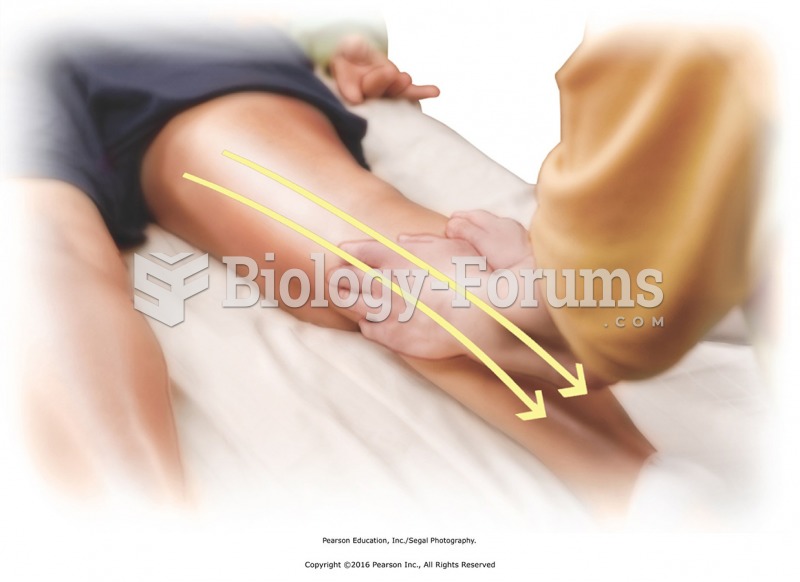|
|
|
Throughout history, plants containing cardiac steroids have been used as heart drugs and as poisons (e.g., in arrows used in combat), emetics, and diuretics.
For about 100 years, scientists thought that peptic ulcers were caused by stress, spicy food, and alcohol. Later, researchers added stomach acid to the list of causes and began treating ulcers with antacids. Now it is known that peptic ulcers are predominantly caused by Helicobacter pylori, a spiral-shaped bacterium that normally exist in the stomach.
Human kidneys will clean about 1 million gallons of blood in an average lifetime.
Recent studies have shown that the number of medication errors increases in relation to the number of orders that are verified per pharmacist, per work shift.
Nearly 31 million adults in America have a total cholesterol level that is more than 240 mg per dL.
 In the communication technique of collaborating, the nurse sends the message that the nurse and pati
In the communication technique of collaborating, the nurse sends the message that the nurse and pati
 This couple is sitting in the grand prize they won for participating in the Day of Conception and ...
This couple is sitting in the grand prize they won for participating in the Day of Conception and ...
 Used antifreeze coolant should be kept separate and stored in a leakproof container until it can be ...
Used antifreeze coolant should be kept separate and stored in a leakproof container until it can be ...
 The 2-deoxyglucose technique. The accumulation of radioactivity is shown in three frontal sections ...
The 2-deoxyglucose technique. The accumulation of radioactivity is shown in three frontal sections ...



